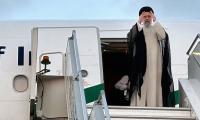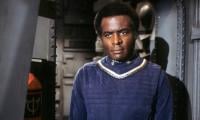WASHINGTON: In the $600 billion annual Defence Department budgets, the $22 million spent on the Advanced Aerospace Threat Identification Programme was almost impossible to find.
Which was how the Pentagon wanted it. For years, the programme investigated reports of unidentified flying objects, according to Defence Department officials, interviews with programme participants and records obtained by ‘The New York Times’. It was run by a military intelligence official, Luis Elizondo, on the fifth floor of the Pentagon’s C Ring, deep within the building’s maze.
The Defence Department has never before acknowledged the existence of the programme, which it says it shut down in 2012. But its backers say that, while the Pentagon ended funding for the effort at that time, the programme remains in existence. For the past five years, they say, officials with the programme have continued to investigate episodes brought to them by service members, while also carrying out their other Defence Department duties.
The shadowy programme — parts of it remain classified — began in 2007, and initially it was largely funded at the request of Harry Reid, the Nevada Democrat who was the Senate majority leader at the time and who has long had an interest in space phenomena. Most of the money went to an aerospace research company run by a billionaire entrepreneur and longtime friend of Mr. Reid’s, Robert Bigelow, who is currently working with NASA to produce expandable craft for humans to use in space.
On CBS’s “60 Minutes” in May, Mr Bigelow said he was “absolutely convinced” that aliens exist and that UFOs have visited Earth.
Working with Mr Bigelow’s Las Vegas-based company, the programme produced documents that describe sightings of aircraft that seemed to move at very high velocities with no visible signs of propulsion, or that hovered with no apparent means of lift.
Officials with the programme have also studied videos of encounters between unknown objects and American military aircraft — including one released in August of a whitish oval object, about the size of a commercial plane, chased by two Navy F/A-18F fighter jets from the aircraft carrier Nimitz off the coast of San Diego in 2004.
Mr Reid, who retired from Congress this year, said he was proud of the programme. "I’m not embarrassed or ashamed or sorry I got this thing going," Mr Reid said in a recent interview in Nevada. "I think it’s one of the good things I did in my congressional service. I’ve done something that no one has done before."
Two other former senators and top members of a defence spending subcommittee — Ted Stevens, an Alaska Republican, and Daniel K. Inouye, a Hawaii Democrat — also supported the programme. Mr Stevens died in 2010, and Mr Inouye in 2012.
While not addressing the merits of the programme, Sara Seager, an astrophysicist at MIT, cautioned that not knowing the origin of an object does not mean that it is from another planet or galaxy. "When people claim to observe truly unusual phenomena, sometimes it’s worth investigating seriously," she said. But, she added, "what people sometimes don’t get about science is that we often have phenomena that remain unexplained."
James E Oberg, a former NASA space shuttle engineer and the author of 10 books on spaceflight who often debunks UFO. sightings, was also doubtful. "There are plenty of prosaic events and human perceptual traits that can account for these stories," Mr Oberg said. "Lots of people are active in the air and don’t want others to know about it. They are happy to lurk unrecognised in the noise, or even to stir it up as camouflage."
Still, Mr Oberg said he welcomed research. "There could well be a pearl there," he said. In response to questions from ‘The Times’, Pentagon officials this month acknowledged the existence of the programme, which began as part of the Defence Intelligence Agency. Officials insisted that the effort had ended after five years, in 2012.
"It was determined that there were other, higher priority issues that merited funding, and it was in the best interest of the DoD to make a change," a Pentagon spokesman, Thomas Crosson, said in an email, referring to the Department of Defence.
But Mr Elizondo said the only thing that had ended was the effort’s government funding, which dried up in 2012. From then on, Mr Elizondo said in an interview, he worked with officials from the Navy and the CIA. He continued to work out of his Pentagon office until this past October, when he resigned to protest what he characterised as excessive secrecy and internal opposition.
"Why aren’t we spending more time and effort on this issue?" Mr Elizondo wrote in a resignation letter to Defence Secretary Jim Mattis. Mr Elizondo said that the effort continued and that he had a successor, whom he declined to name.
UFOs have been repeatedly investigated over the decades in the United States, including by the American military. In 1947, the Air Force began a series of studies that investigated more than 12,000 claimed UFO sightings before it was officially ended in 1969. The project, which included a study code-named Project Blue Book, started in 1952, concluded that most sightings involved stars, clouds, conventional aircraft or spy planes, although 701 remained unexplained.
Robert C Seamans Jr, the secretary of the Air Force at the time, said in a memorandum announcing the end of Project Blue Book that it "no longer can be justified either on the ground of national security or in the interest of science."
Mr Reid said his interest in UFOs came from Mr Bigelow. In 2007, Mr Reid said in the interview, Mr Bigelow told him that an official with the Defence Intelligence Agency had approached him wanting to visit Mr Bigelow’s ranch in Utah, where he conducted research.
Mr Reid said he met with agency officials shortly after his meeting with Mr Bigelow and learned that they wanted to start a research programme on UFOs. Mr Reid then summoned Mr Stevens and Mr Inouye to a secure room in the Capitol.
"I had talked to John Glenn a number of years before," Mr Reid said, referring to the astronaut and former senator from Ohio, who died in 2016. Mr Glenn, Mr Reid said, had told him he thought that the federal government should be looking seriously into UFOs, and should be talking to military service members, particularly pilots, who had reported seeing aircraft they could not identify or explain.
The sightings were not often reported up the military’s chain of command, Mr Reid said, because service members were afraid they would be laughed at or stigmatized. The meeting with Mr Stevens and Mr Inouye, Mr Reid said, "was one of the easiest meetings I ever had."
He added, "Ted Stevens said, ‘I’ve been waiting to do this since I was in the Air Force.’" (The Alaska senator had been a pilot in the Army’s air force, flying transport missions over China during World War II.)
During the meeting, Mr Reid said, Mr Stevens recounted being tailed by a strange aircraft with no known origin, which he said had followed his plane for miles. None of the three senators wanted a public debate on the Senate floor about the funding for the programme, Mr Reid said. "This was so-called black money," he said. "Stevens knows about it, Inouye knows about it. But that was it, and that’s how we wanted it." Mr Reid was referring to the Pentagon budget for classified programmes.
Contracts obtained by ‘The Times’ show a congressional appropriation of just under $22 million beginning in late 2008 through 2011. The money was used for management of the programme, research and assessments of the threat posed by the objects.
The World Meteorological Organisation flag. — AFP FileGENEVA: Global temperatures hit record highs last year, and...
This image shows the outside view of the U.S. Senate. — AFP/FileWASHINGTON: Billions of dollars in foreign aid for...
Each year, many African migrants brave the perilous “Eastern Route” across the Red Sea and through war-scarred...
State Department US building can be seen in this picture. — AFP/FileWASHINGTON: The U.S. State Department’s annual...
Former US president Donald Trump. — AFP/FileNEW YORK: The judge overseeing Donald Trump’s criminal hush money...
Abortion-rights activists hold a protest on in Phoenix, USA. — AFP/File WASHINGTON: The idea of a doctor in the...







